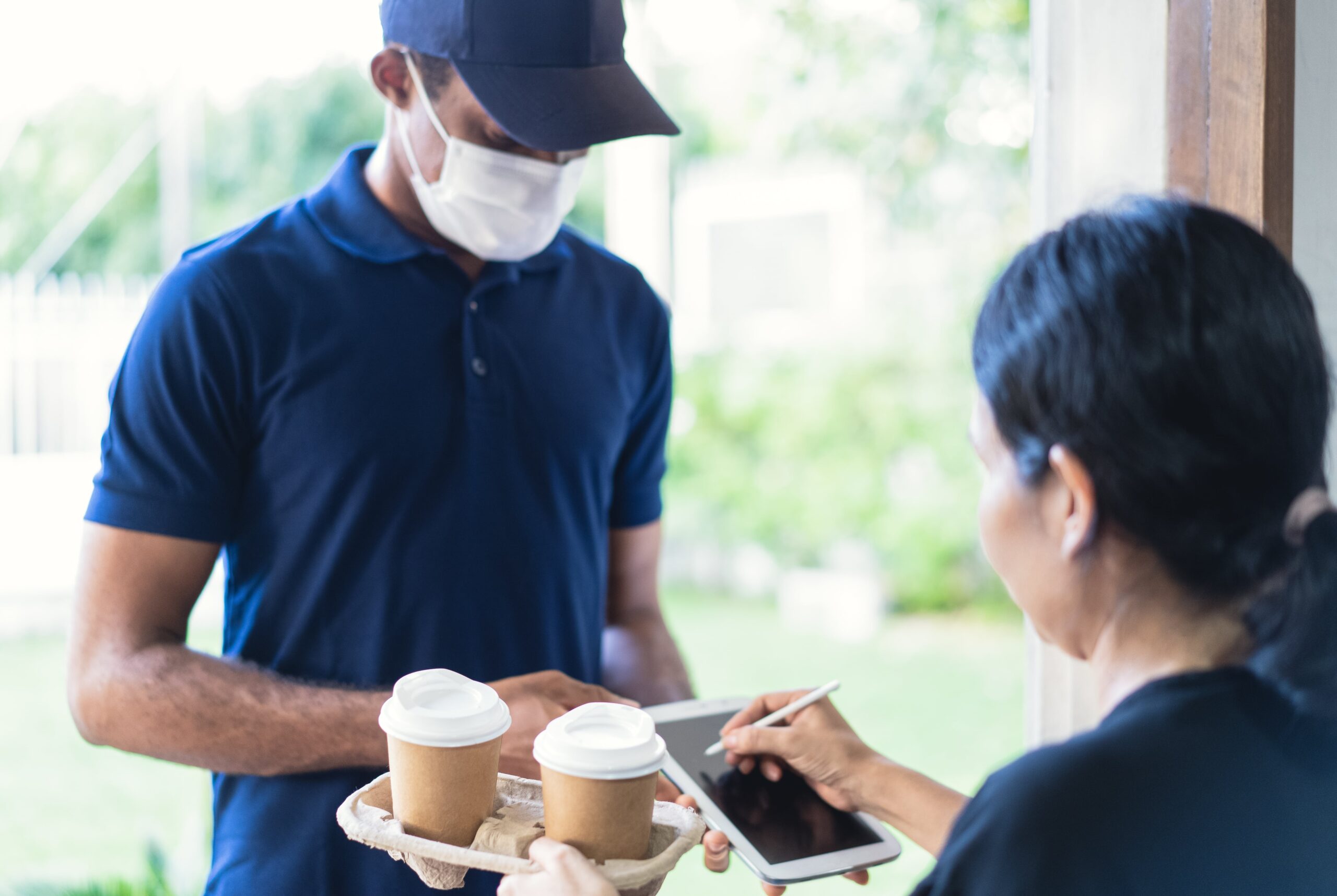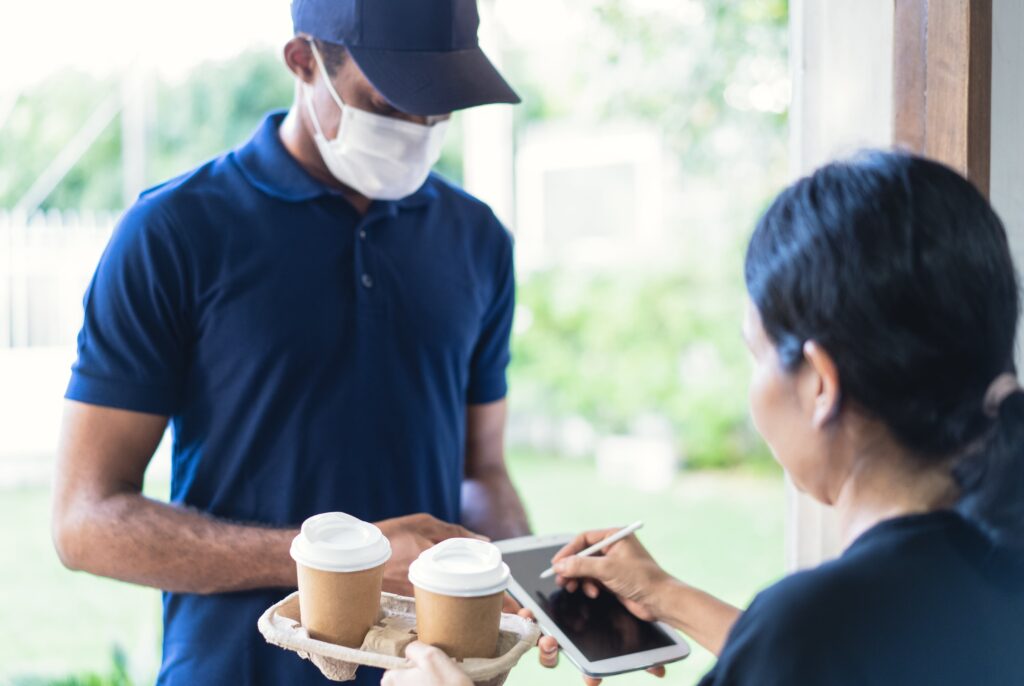Signature tracking (typically referred to by postal services as signature on delivery or signed for delivery) is an industry-wide form of recorded delivery that requires the recipient to sign for it, thus acting as a form of proof of delivery.
It’s frequently offered as an optional service that is reserved for deliveries that contain items that require a signature as proof of delivery, in order to adhere to regulatory requirements, such as pharmacy medicines, or deliveries that contain items that are of high value.
This form of delivery tracking gives the sender the ability to pinpoint the exact date and time the parcel was delivered and signed for, as well as who signed for it. This creates an audit trail of information which is added into digital archives and readily available if needed.
At the point of delivery, the driver will request the signature of the recipient (or specified individual, such as a neighbour) using a handheld electronic Proof of Delivery (ePOD) device, or alternatively a Proof of Delivery application on a smartphone.
The days of handwriting signatures on paper delivery documents are now a relic of a bygone era – or at least it should be with the advent of digital / electronic proof of delivery technology.
There are a number of benefits to the sender, particularly e-commerce businesses, when signature tracking is used., particularly in these situations:
- When sending goods or products to the recipient’s workplace or to their neighbour as requested, the sender can identify who signed for the parcel should the recipient get in touch to say they haven’t received it
- For retailers selling online, recorded delivery helps to reduce the number of false claims – customers may falsely claim that they haven’t received their delivery despite doing so.
- Customers may also claim that they have been subjected to fabricated delivery theft, which is averted as the delivery can only be re-delivered and completed at a later date upon the goods being signed for.
The rise of ‘postal piracy’
Postal piracy (or porch piracy), more commonly known as postal theft, is the act of packages or parcels being stolen, typically when they are left unattended on a recipient’s premises.
It has become an increasingly common issue ever since the COVID-19 pandemic caused home deliveries to surge worldwide and non-contact deliveries became the norm.
Delivery providers had to forgo signing for deliveries altogether and, as a consequence, consumers became accustomed to having their deliveries left on their doorstep or in a safe place so that deliveries became contactless.
And as a result of this, opportunities for package theft became greater than ever before.
“Package thefts unfortunately are on the rise, perhaps in part because of the increase in online shopping that started with the pandemic in 2020,” – Teresa Murray, a consumer watchdog for US PIRG told CNBC.
Research has found that porch piracy has become an epidemic of its own, and is continuously increasing in prevalence in the US and worldwide.
“Around 260 million packages disappeared from porches across America over the last 12 months according to results from our latest survey of 1,000 Americans—that’s 50 million more packages that were swiped compared to last year’s results.”
SafeWise
It all comes at a significant cost too.
A study found that the median value of stolen merchandise was $50 from 2020 to 2021. The incident rates and average loss captured in their research reflect more than $2.4 billion in stolen goods due to porch piracy over the period of one year.
Porch piracy has continued to escalate in frequency as workers return to office too.
Nearly 1 in 4 (23%) people in the US say that they’ve had a package stolen in the three months leading up to March 2022, beating the previous peak in December 2020 during the pandemic.
The statistics highlight the prevalence of the issue, and more importantly the need to have the correct countermeasures in place to combat it.
Using a delivery signature application to combat the rise of postal piracy and increase security

For businesses looking to safeguard themselves against porch piracy or customers making bogus claims that they haven’t received their order, an electronic Proof of Delivery (ePOD) application is a must, particularly for those who are intending to capture signatures.
First and foremost, businesses should use a courier service that has ‘signature on delivery’ as an option. Prices for sending a parcel with signature tracking in the UK start from as little as £1.72 and some postal services include compensation of up to £50 for packages that are lost in transit.
Or, for businesses that deliver products in their own fleet of vehicles, they should offer flexible signed for delivery services, so that they can cater to their customer’s preferences as well as complying with any specific industry regulations.
There are also a range of signed for options available to choose from, enabling businesses to fulfil the preferences of their customers:
- Indirect signature – a signature is required from someone at the delivery address, from a neighbour or from a building manager. If no one is available to sign, the courier will attempt to redeliver the package on another date.
- Direct signature – a signature is required from someone at the delivery address only. If no one is available to sign, the courier will attempt to redeliver the package at a later date
- Adult signature – a signature is required from any person of legal age at the delivery address, subject to the provision of a valid ID. If no one qualified to sign is available, the courier will attempt to redeliver the package at a later date.
All of these delivery preferences need to be captured on an effective ePOD application that allows signatures to be recorded through sign-on-glass technology.
This data is then stored on the cloud for easy access across a given network, ultimately eliminating the need for paper-based delivery forms and the hassle that comes with them.
Stream’s ePOD mobile app offers the ability to track and trace every delivery and collection, with GPS locations and time stamps for everything recorded; not only for signatures, but for picture proof of delivery too.
Detailed notes can be left against any order too – so whoever is delivering the package can specify whether or not it was an indirect or a direct signature, and note the name of the person who signed for it.
Delivery drivers may combine a signature and a picture as proof of delivery for optimal security, to make it easy to ascertain who signed for the package, as well as when. Capturing both photos and signatures is quicker than ever, thanks to the latest ePOD software and the speed of the devices recording them.
This information can then be sent to the customer so that they can confirm that the package was delivered as specified, and received by the correct person, ultimately reducing the likelihood of the package ending up in the wrong hands.
All of these functionalities should come as standard with any ePOD application, in tandem with a secure cloud server to store and access all of the captured information.
Integrations with other software applications should come as standard too, be that Brightpearl, SAP Business One, Mintsoft, Unleashed or Sage 200 (see our extensive list of integration partners), so that the ePOD information is automatically passed through to your business systems, without the need for manual intervention.
Want to find out more about delivery signature apps and ePOD?
Read more articles about Proof of Delivery
If you enjoyed this article, then here’s selection of other articles you might want to read about proof of delivery we’ve published over the years:
This article answers the fundamental question… ‘What is Proof of Delivery?’ You can also read a comparison between Stream vs. SmartRoutes.
Want to know what the best device is for capturing proof of delivery? ‘Which is the best ePOD device’ answers that exact question, or what you should look out for when choosing an ePOD app?
We’ve also looked at another benefit of using the Stream mobile app for your transport and logistics business before: providing real-time delivery tracking through barcode scanning. for instance this article asks how you can ‘use Barcodes with Delivery Tracking Software‘.
Frequently Asked Questions
Postal piracy or porch piracy, more commonly known as postal theft, is the act of packages or parcels being stolen, typically as it is left unattended on a recipient’s premises. It has become an increasingly common issue since the COVID-19 pandemic caused home deliveries to surge worldwide and non-contact deliveries became the norm.
ePOD is the same as regular Proof of Delivery, with the same requirements for its collection, but with the addition of technology (usually a smartphone or tablet device) to make the job more efficient.
There are a wealth of benefits associated with using electronic Proof of Delivery, including: instant access to data, improved customer service, in addition to increased productivity, security and accountability. EPOD also eliminates the need for paper-based forms that can easily be misplaced – and with it vital information.
Stream’s mobile app makes it easy for delivery drivers to capture ePOD on any (relatively) up-to-date Android or iOS device. Some logistics operations choose to use specialist rugged devices from providers such as Zebra, Honeywell and Samsung (these devices typically have dedicated barcode scanning engines and can survive drops and bangs associated with the rigours of a logistics operation), while others choose to use consumer-grade mobile devices.








